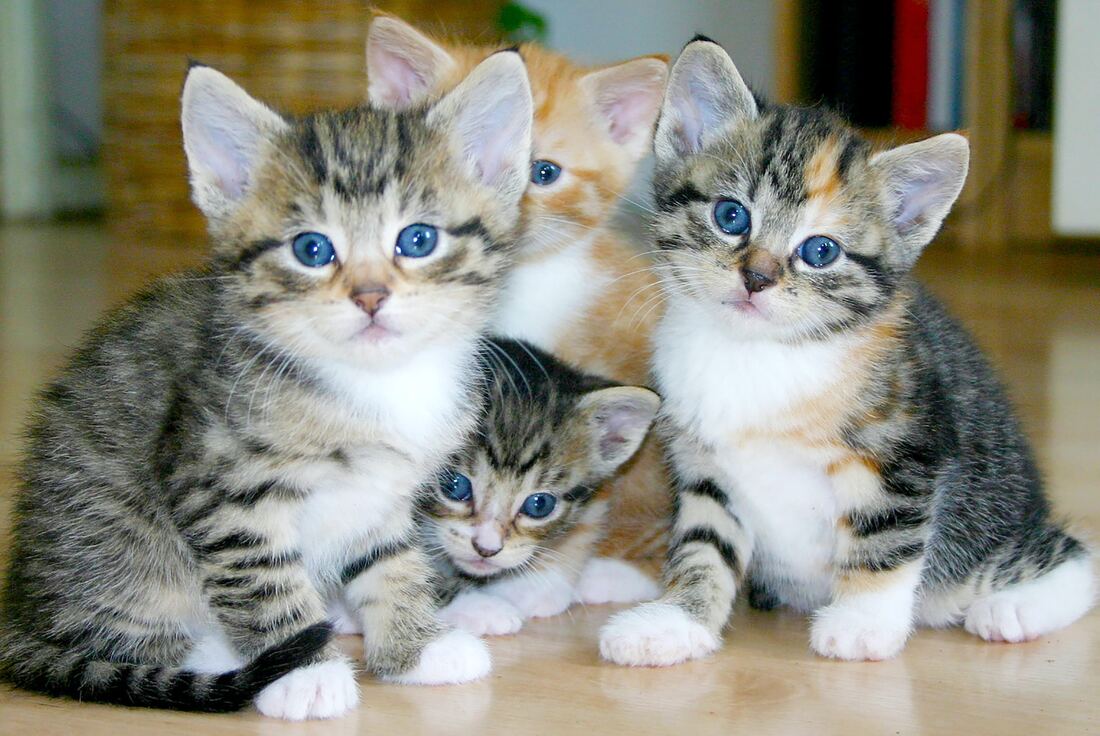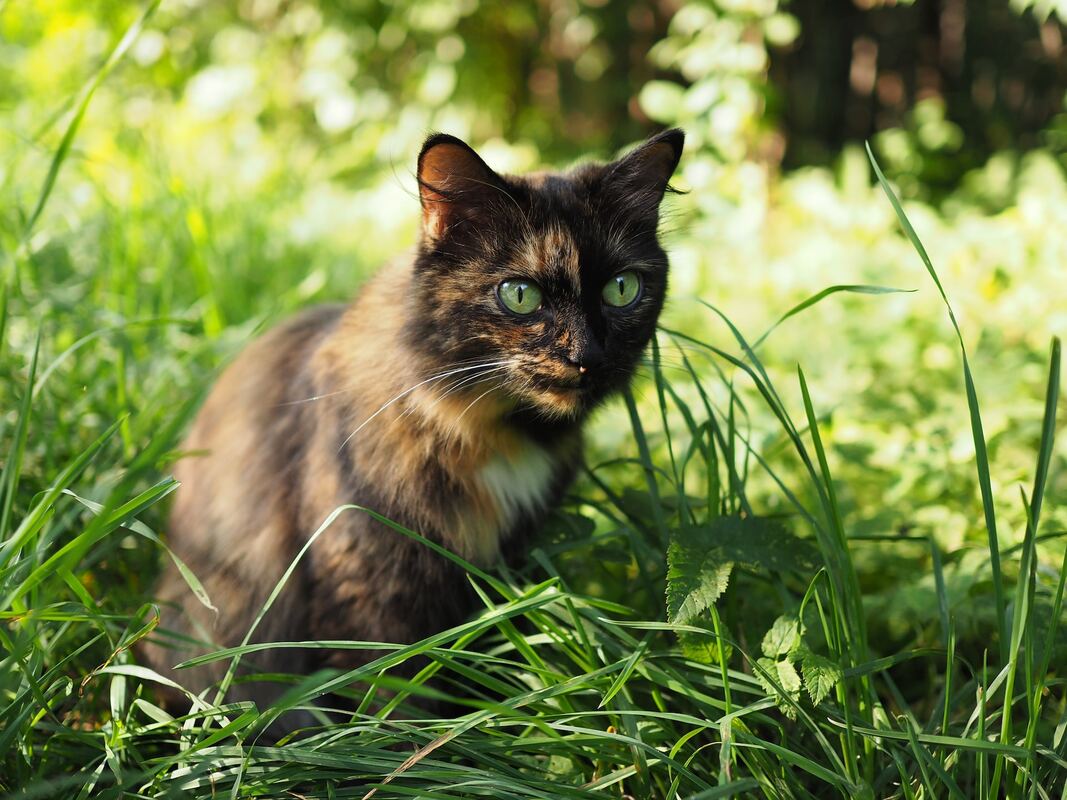|
How To Choose A Cat To Blend Into Your Family
Once upon a time, a little stray tortoiseshell named Daphne walked up to my back porch and demanded entry. Those of you familiar with previous blogs will know that Daphne is now a dear member of my family. However, her introduction into my world was not Maddie’s, my other cat at the time, favorite thing. Maddie was your typical loud-mouth Siamese (and a complete drama queen) but this was different a much different sound than I was used to hearing from her. There was primal anger to that howl. I looked out my side door and there sat a kitten staring right into my house. Maddie was howling, about to throw herself through the glass door. Maddie had been the queen of her kingdom for 12 years and was not about to welcome a little stray in it without voicing her opinion. Long story short, it was a futile waste of energy over the next few weeks as this little tortoiseshell, now named Daphne Louise, worked her way into my heart. I had remembered that my vet told me years ago that when you introduce 2 cats, do so gradually. A glass door (or similar) is best to get them acquainted. Regardless, there are many other extra considerations to take into account and prepare for when adding a cat or kitten to an already established cat and their home. The Age Factor Daphne was maybe 6 months old when she was introduced to Maddie. The younger the cat, the easier it is for older cats to accept and welcome them. Perhaps if Daphne had been a tiny 6 week-old instead, it might’ve been easier but I’ll never know. Adding a fully mature or grown cat can be more challenging, but it’s not impossible. Several customers at the cat spa have successfully added older cats to their families. While the cohesion may take a bit longer, eventually the cats do cohabitate and tolerate each other just fine. Cats are incredibly territorial, hence Maddie going bonkers at the mere sight of a cat on the doorstep. Even now, Daphne will do the same when she sees a cat in the yard cutting through to the neighbors. Her one-acre kingdom and the next-door lot is hers and she intends to keep it that way! This ownership of their space is the same indoors and outdoors. Keep in mind that when some cats get territorial, they can mark and spray. Having the new addition and established cat spayed or neutered can help the temptation to compete and mark all over your house. Does Gender Matter? Gender really doesn’t matter when adding a new cat to the brood. Some research has shown that a male can be easier to accept, but that is not 100% confirmed, so don’t let that sway your choice. My 2 girls were just fine together and the hierarchy always happens immediately. The cats will decide who is in charge and who is along for the ride so boy or girl, pick the new cat that is right for you. If it is a stray who shows up, well then they made the decision for you. Take Into Account Each Cat’s History One main consideration to remember is how this new cat was raised – feral, in a home, shelter cat, indoor-only, outdoor only or a combination. All of these have their plusses and minuses and can alter the dynamics of your home. I had always had indoor cats. When Daphne came along she was an entirely new bag, as she had clearly been someone’s cat previously but also had to go outside. I was very uncomfortable with her being out so I spoke to my vet about it. She said that if a kitten becomes accustomed to being outdoors early in its development, there is sort of a switch that goes on and likely cannot be turned off. The cat will always want to go out. Prohibiting that can lead to stress and anger. Some cats will even shred doors and screens and jump out of windows to get outside. This was a new world for me to be the doorman for Daphne. I also was not used to the ‘presents’ she would bring me. Not every cat who is feral/stray will be an indoor/outdoor cat. Some will learn to love the indoors, so there are exceptions. A friend of mine has a feral cat who showed up and just keeps her distance but will not go outside at all. Perhaps she is simply smart enough to realize that she doesn’t need to hunt for food and shelter anymore. One caveat is that this lovely cat will never be a lap cat due to her upbringing. Take this into consideration, as it can be a learning experience with the different ways they were raised. What Should I Consider When Adding A Cat? Once Daphne decided that my home was going to be her home, there were some things to consider. You wouldn’t think adding one new cat would make a difference but it really does.
How To Safely Add a Cat To Your Family Now the new cat is here and you need to get the current cat to accept it. Then they will all live together in peace and harmony, right? Not so fast. There is a process that should take place to avoid unnecessary drama and feline unrest in your home. The main point my vet told me was to make the introduction gradual and to let them see each other (this is why glass doors are helpful!) in order for them to get used to each other. Opening the door and pushing them together and hoping for the best is NOT the way to go. This will most certainly cause headaches for everyone involved!
Adding a new kitten or cat to the mix can be fun and exciting, but it is important to take it slow and easy with both cats. Their personalities are unique, just like humans, so sometimes these new friendships just click and other times, they don’t. Following some tips and considerations can ease the stress and make the transition to a larger family all the more fun.
1 Comment
Can a Feral Cat Become a House Cat?
Seven and a half years ago, little Daphne strolled up to me in my backyard and meowed at me, begging for food and water. She was extremely thin and dehydrated but followed me to the door and waited as I went inside to bring her some nourishment. The rest is history! I knew instantly from her behavior that she had been abandoned by some horrible person. It was easy to tell that she trusted humans and knew how to ask for help. I was so glad she found me so quickly, because who knows what could have happened to her living out in the elements by herself. Daphne was simply a stray cat and there is a huge difference between a stray and a feral. I often hear customers interchange the 2 terms so let’s discuss the vast differences and what to do if you find either one. How to Tell if A Cat is Feral Years ago, I was awakened to a guttural howling sound and went outside to look. I could see movement by the fence. There sat a tiny little kitten howling and crying. As I approached it, it went from adorable crying to a huge lion roar. That was not an abandoned little house kitten but a straight-up feral kitten who did not want to be around a human. She definitely did not want to be touched or assisted. I slowly backed away, as I did not want to confront this wild kitten. It was as wild as if I had found a baby kit (fox) or opossum. You can usually tell if a cat is feral if:
Feral kittens do have some potential to be rescued and turned into a domestic cat. The earlier this can happen, the better. Kittens need to be taken from a feral colony or mother around 4-6 weeks. Any earlier and there could be health or weaning issues. As with any unknown cat, be very careful to not be bitten or scratched. Feral cats can be particularly dangerous since you won’t know any health or disease history. If the cat is still present, it will have to go into quarantine until the health department has given an all-clear for rabies or other diseases. Adult feral cats are typically untameable and will stay wild and ferocious to humans. They have never interacted with humans and do not have the skill set to do so. Or the will to learn how. What To Do With a Feral Cat So what happens if a feral cat arrives under your porch to live?
All of these tactics require patience. You will not instantly see results. Even domesticated cats have a hard time adjusting to new people and places. One cat here at the spa took 2-3 weeks before she would stop growling, hissing and shaking her carrier. Eventually, she warmed up to us but still has her moments. Feral cats may be able to calm down somewhat around humans. However, you should never confuse them with a domesticated cat. Bottom line: feral cats are wild animals. Stray Cat Success Story Daphne was simply a stray cat that was once a person’s pet. She had learned how to properly interact with humans and live in a home. Stray cats are generally domestic cats that have been abandoned and tend to be friendly. But how can you tell? As with Daphne, they’ll approach you with their cute little head bumps, sniff you, maybe make that weird open mouth face, and of course, purr. Offering them food is an easy way to show they can trust you. I was warned “feed a stray and they’ll never go away” and I am proof that there is truth to that statement! The same is often true with ferals, but there is a limit. Feral cats are opportunistic. They’ll stay around while the food keeps coming, but they’re in survival mode. When the food stops, they aren’t sticking around to make friends. Feral cats are nearly impossible to groom. They are often prone to biting, hissing, growling and bloodshed. Caution should be used around attempting to even touch a feral and they really shouldn’t be adopted out. Many sweet domesticated cats need homes and are happy to have them. I’d personally recommend taking in these cats (who have been socialized) versus taking in a cat that is akin to a raccoon. Leave some food out and you never know, the sweetest cat ever may be hiding right in your backyard! |
AuthorWhen Cari has some free time from all the kitties, she likes to share her knowledge of all things cat in this bi-monthly blog. Enjoy the read! Archives
June 2024
Categories |



 RSS Feed
RSS Feed